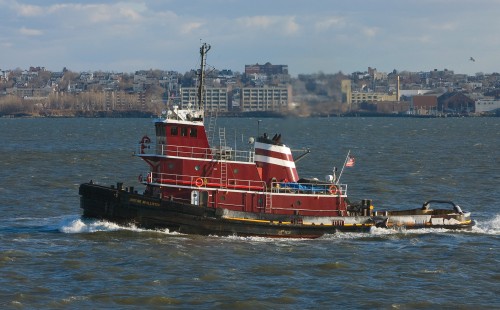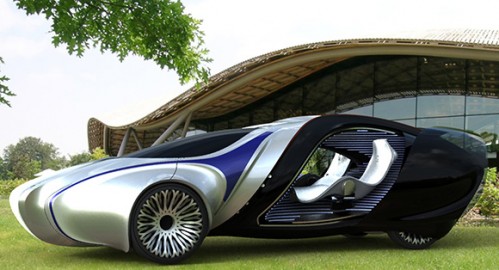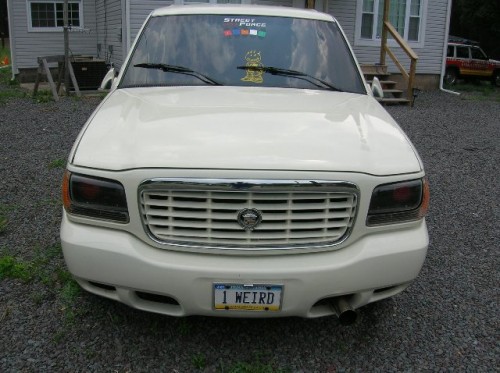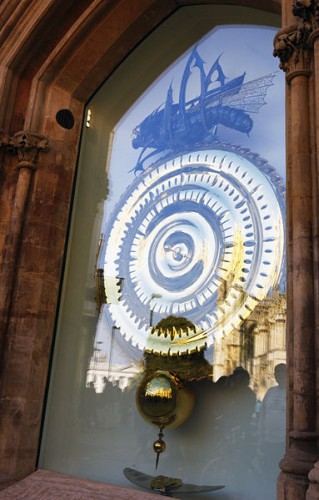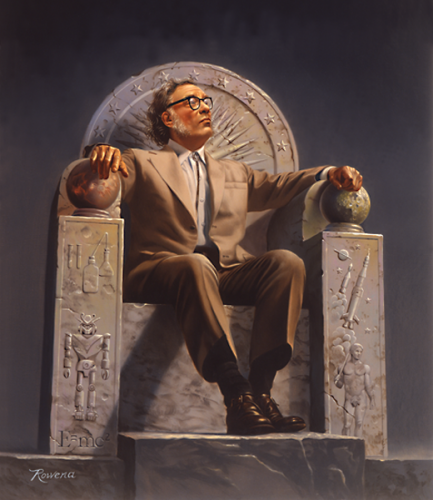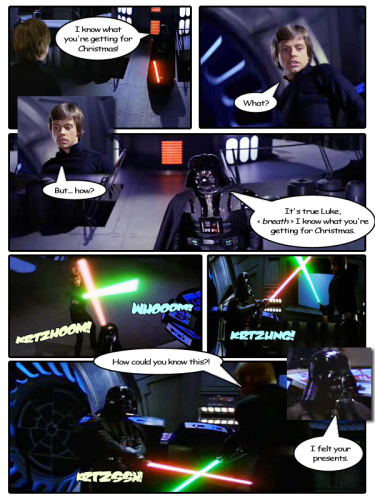Lolcat Book
Yes, there’s actually a book now. For sale on Amazon.com. Yet another sign the end is near.
Emo Cows
Tags:Cute As Hell Animals, Humor
Tugboat
The Justine McAllister, a tugboat, in New York Harbor. Tugboats are used to maneuver, primarily by towing or pushing, other vessels in harbors, over the open sea or through rivers and canals. Tugboats are also used to tow barges, disabled ships, or other equipment like towboats.
en.wikipedia.org/wiki/Wikipedia:Picture_of_the_day
Dr. Strange sends a blast
Tags:Comic Books, Fantasy - Science Fiction, Wallpaper
Funky Green Concept Cars
Psychedelics on wheels…
From Wired Magazine
www.wired.com/cars/futuretransport/multimedia/2008/08/gallery_green_concept_cars
Cats can swim
Tags:Cute As Hell Animals, Humor, LOLcats
Proof.
The Ultimate Pie Chart
Mmmm… Pie…
Found@DRB
www.darkroastedblend.com/2008/09/super-star-mobile-skyscraper.html
Pushmepullyou Limo
Better known as the two headed, double ended Llama Limo…
Pics:
www.autoblog.com/photos/weirdtruck-dual-nosed-escalade-limo/239145/
Via DRB
www.darkroastedblend.com/2008/09/over-top-limousines.html
My Next SUV
The Russian Kamaz-43269. This ain’t your gramps Lada…
www.darkroastedblend.com/2008/09/over-top-limousines.html
Scrappy Junkyard Predator
This Junk Will Jack You Up…
readmore-webphemera.blogspot.com/2008/09/predator-lands-in-london.html
Haumea of the Outer Solar System
Tags:APOD, Science!, Space, Wallpaper
Explanation: One of the strangest objects in the outer Solar System was classified as a dwarf planet last week and given the name Haumea. This designation makes Haumea the fifth designated dwarf planet after Pluto, Ceres, Eris, and Makemake. Haumea’s smooth but oblong shape make it extremely unusual. Along one direction, Haumea is significantly longer than Pluto, while in another direction Haumea has an extent very similar to Pluto, while in the third direction is much smaller. Haumea’s orbit sometimes brings it closer to the Sun than Pluto, but usually Haumea is further away. Illustrated above, an artist visualizes Haumea as a nearly featureless ellipsoid. Quite possibly, however, Haumea has interesting craters and surface features that currently remain unknown. Originally discovered in 2003 and given the temporary designation of 2003 EL61, Haumea was recently renamed by the IAU for a Hawaiian goddess. Haumea has two small moons discovered in 2005, recently renamed Hi’iaka and Namaka for daughters of the goddess.
antwrp.gsfc.nasa.gov/apod/astropix.html
Actual art on @ a college?
The Corpus Clock is a large sculptural clock on the outside of the Taylor Library at Corpus Christi College, Cambridge. It was conceived and funded by John C. Taylor, an old member of the college.
It was officially unveiled to the public on September 19, 2008 by Cambridge physicist Stephen Hawking
The clock’s face is a rippling 24-karat gold-plated stainless steel disc, about 1.5 metres in diameter. It has no hands or numbers, but displays the time by opening individual slits in the clock face backlit with blue LEDs; these slits are arranged in three concentric rings displaying hours, minutes, and seconds. The lights dart rapidly around the clock, pausing at the correct positions allowing the time to be read as on a normal analog clock.
The dominating visual feature of the clock is a sculpture of a grim-looking, devouring, metal insect similar to a grasshopper or locust. The sculpture is actually the clock’s escapement (see below). Taylor calls this beast the Chronophage (literally ‘time eater’, from the Greek ÇÃÂÌνο [chronos] time, and ÆαγÎÂÉ [phageo] to eat). It moves its mouth, appearing to ‘eat up’ the seconds as they pass, and occasionally it ‘blinks’ in seeming satisfaction. The creature’s constant motion produces an eerie grinding sound that suits its task. The hour is tolled by the sound of a chain clanking into a small wooden coffin hidden in the back of the clock.
The clock is entirely accurate only once every five minutes. The rest of the time, the pendulum may seem to catch or stop, and the lights may lag or, then, race to get ahead. According to Taylor, this erratic motion reflects life’s “irregularity”.
Conceived as a work of public art, the Chronophage reminds viewers in a dramatic way of the inevitable passing of time. Taylor deliberately designed it to be “terrifying”: ‘Basically I view time as not on your side. He’ll eat up every minute of your life, and as soon as one has gone he’s salivating for the next.” Others have described it as “hypnotically beautiful and deeply disturbing”.
[edit]Mechanics of the clock
The Corpus Clock is a product of traditional mechanical clockmaking. It features the world’s largest grasshopper escapement, a low-friction mechanism for converting pendulum motion into rotational motion. The grasshopper escapement was an invention of eighteenth-century clockmaker John Harrison, and Taylor intended the Corpus Clock to be an homage to Harrison’s work. Since “no one knows how a grasshopper escapement works”, Taylor “decided to turn the clock inside out”[6] so that the escapement, and the escape wheel it turns, would be his clock’s defining feature.
The Corpus Clock’s clockwork is entirely mechanically controlled, without any computer programming, and electricity is used only to power an electric motor, which winds up the mechanism, and to power the blue LEDs that shine behind the slits in the clock’s face. The clock has many unexpected and innovative features; for example, the pendulum briefly stops at apparently irregular intervals, and the Chronophage sculpture moves its mouth and blinks its eyes. Taylor explains it as follows:
The gold eyelids travel across the eye and disappear again in an instant; if you are not watching carefully you will not even notice. . . . Sometimes you will even see two blinks in quick succession. The Blink is performed by a hidden spring drive, controlled in the best tradition of seventeenth century clockmakers of London. The spring is coiled up inside a housing that can be seen mounted on the large gearwheel visibly protruding from the bottom of the mechanism. As the huge pendulum below the Clock rocks the Chronophage as he steps round the great escapewheel, each backward and forward movement is used by sprag clutches to wind up the drive spring. A position step prevents the spring from being overwound yet allows the spring to be ready at an instant to drive the Blink. The mechanism is released by a countwheel with semi random spacing so the Blink takes place at any position in the to- and fro- motion of the pendulum. A further countwheel mechanism chooses a single or a double blink whilst the air damper at the top of the gear train slows the action to a realistic pace.
The Corpus Clock is expected to be able to run accurately for at least two hundred years.
[edit]Funding and realisation
Taylor invested five years and £1 million in the Corpus Clock project, and two hundred people, including engineers, sculptors, scientists, jewellers, and calligraphers, were involved. The clockwork incorporates six new patented inventions, and “the rippling gold-plated dial was made by exploding a thin sheet of stainless steel onto a mould underwater . . . [at] a secret military research institute in Holland.” Stewart Huxley was the design engineer. Sculptor Matthew Sanderson modelled the Chronophage.
Isaac Asimov
Tags:Awesome Things, Books, Isaac Asimov
Black and Young
I dunno about you guys, but I don’t think real estate when I see www.youngandblack.com.au
I found this in Burleigh Waters on the Gold Coast, QLD Australia.
Wild Animal Crunch!
Tags:Cute As Hell Animals, Dark Humor, WTF
Tastes like extinction!
Woll Smoth and Fronds
I got these from community.livejournal.com/ohnotheydidnt/20184696.html , but they may have come from somewhere else.
Penguicow
This is an interesting cow sculpture located near to the penguin pool at Edinburgh Zoo. I am led to believe that a problem with cross-breeding penguins and cows, is that the milk Pengui-cCws, or Cow-Guins, produce tastes a liitle too fishy! Also milk-maids find it very difficult to swim across the penguin-pool whilst carrying a pail full of milk.
Stolen completely from: www.flickr.com/photos/12559612@N00/2875271977
TIE Fighter
“The standard mount point for the primary weapons of a TIE craft is just below the forward cockpit window on the main hull ball. Vessels designed for mainly non-combat roles may have a single central cannon with a barrel gauge of several centimetres, but the most common configuration on combat ships is a pair of laser cannons side by side. Placement of guns near the centre of a fighter provides a stable weapons platform and may provide slight advantages to pilot aim. [Central placement is reported as an advantage in performance comparisons between World War 2 fightercraft.]
The laser cannons are usually represented as short cylindrical protrusions from the hull plating. An alternative form of laser cannon takes the form of an orange conical device of a size similar to the cylinder-type cannons. These seemingly simple structures evidently are not the only mechanism involved, because the blast bolts can be shot out in many different directions. Although this isn’t obvious to the eye, something inside the weapons must be capable of swivelling. The pilot may direct his fire anywhere within the field of view without turning his craft, and the tracking does not detectably delay the bolts’ firing. This is a significant advantage over the more static armaments of most rebel starfighters, such as the X-Wing and Y-Wing,
Some models of TIE interceptors and other heavier combat craft mount laser cannons and ion cannons on forward tips or the hubs of the wings. The reasons for this are not entirely clear: there may be tactical and practical advantages in having the cannons widely spaced; or it may simply be a matter of main cockpit ball being too tightly packed with other systems. Direct attachment to the radiators might allow a marginal improvement in the cooling of overheated weapons, or it might allow easier access for maintenance crews. Spreading the fire may improve strafing, and may boost the chances of scoring a few hits even when a few of the linked shots miss. Another possible advantage is redundancy of guns on a partially-damaged fighter: a single grazing hit cannot ruin all of the interceptor’s weapons at once. In any case, most designs with wing-mounted guns already have the standard chin guns; wing guns usually seem to be supplemental.
The bolts fired from TIE laser cannons are consistently green in colour, at least on the military models. Green blaster bolts appear to be exclusive to spacecraft and artillery in Imperial service. The physical significance of this is unclear.” – Dr Curtis Saxton
Captain America Speaks The Truth
I don’t remember where I found this, but for some sophmoric reason, It makes me feel tingly when i read it.
America, Fuck Yeah F-117 Nighthawk
Tags:Humor, Military, Weapons, WTF
Russian Tu-160 Blackjack
The Tupolev Tu-160 (NATO reporting name Blackjack) is a supersonic, variable-geometry heavy bomber designed by the Soviet Union. The Tu-160 is the heaviest combat aircraft ever built. The aircraft is similar to the B-1 Lancer, but 430mph (692 km/h) faster than the Lancer, and possesses greater range and payload capabilities. Produced 10 years later than the B-1, it flies at 10,000 ft (3,048 m) lower maximum altitude.
Its pilots call the Tu-160 the “White Swanâ€Â, due to the surprising maneuverability and antiflash white finish of the aircraft.
Wildfire, Big Sur, California, 2000
A wildfire encroaches on a tree in California’s still wild Big Sur. Strict zoning laws and a limited water supply ensure that the area has not become overly populated, and nature, too, has done her part to keep developers away: In 1997 a fire raged in the Santa Lucia Range for three weeks. Big Sur naturalist John Smiley calls the wildfires simply “another type of weather.”
photography.nationalgeographic.com/photography/photo-of-the-day
Two Giant Galaxy Clusters Collide
Tags:APOD, Science!, Space, Wallpaper
Explanation: What happens when two of the largest objects in the universe collide? No one was quite sure, but the answer is giving clues to the nature of mysterious dark matter. In the case of MACSJ0025.4-1222, two huge clusters of galaxies have been found slowly colliding over hundreds of millions of years, and the result has been imaged by both the Hubble Space Telescope in visible light and the Chandra Space Telescope in X-ray light. Once the above visible image was recorded, the location and gravitational lens distortions of more distant galaxies by the newly combined galaxy cluster allowed astronomers to computationally determine what happened to the clusters’ dark matter. The result indicates that this huge collision has caused the dark matter in the clusters to become partly separated from the normal matter, confirming earlier speculation. In the above combined image, dark matter is shown as the diffuse purple hue, while a smoothed depiction of the X-ray hot normal matter is shown in pink. MACSJ0025 contains hundreds of galaxies, spans about three million light years, and lies nearly six billion light years away (redshift 0.59) toward the constellation of Monster Whale (Cetus).
antwrp.gsfc.nasa.gov/apod/astropix.html
Imperator-class star destroyer
“The hull number of the star destroyer Entor (CVS 1049) indicates either that in excess of a thousand star destroyers of this class have been built, or that this is the 1049th built by its particular shipyard. According to the reports of Rebel Alliance historian Arhul Hextrophon (in The Imperial Sourcebook) the Galactic Empire has a about three to five dozen or so destroyers in an average sector group fleet, of which there is at least one for each of the Empire’s thousands of sectors. This indicates that the local territorial fleets alone account for tens of thousands of star destroyers galaxy-wide. It should be noted that though Hextrophon’s reports have proven to be error-prone on many occasions; they consistently tend towards gross underestimates of Imperial naval and military strengths. The true number of star destroyers is probably much greater than the values he implies. In addition to the vessels assigned to particular sectors, there must be uncounted numbers attached to Imperial High Command and elite roving forces such as those of some Grand Moffs, and higher officials such as Lord Darth Vader.” -Dr Curtis Saxton







